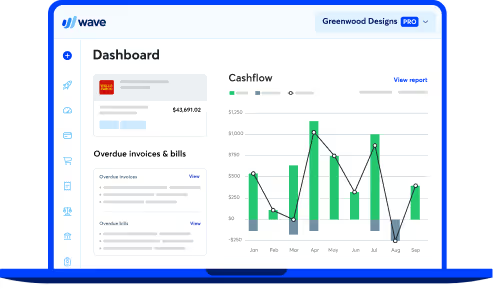
How to blog like a pro
If you want to blog like a pro, you need to be more than a good writer. You need to know how to set the foundation for success. Small businesses owners have very little time in the day—if you’re using some of that precious time to blog, you want it be effective.
If you’re ready to blog like a pro, this is your crash course. Use these tips, tricks, and insights to create content that drives leads, boosts your SEO, and helps you build authority in your space.
Develop your strategy
Your content strategy can be as detailed or basic as you want, as long as there are a few key components. As you build out this strategy, make sure that you can answer the following questions:
- A clear audience: Who will you be creating content for? If you’ve done persona work, those people are likely the ones you’re targeting.
- The benefit to your audience: How is your content helpful? What problems are you solving? This could be customer problems, based on support questions you often get, or problems for your audience as a whole, based on what you know of them or research you’ve done.
- Your unique view: What unique angle or viewpoint do you bring to your blog? Most topics in most industries have already been covered, so how are you going to bring a different voice to the conversation? This comes back to your brand story and messaging, which is where you’ve likely already fleshed out your unique values as a business.
Set goals
Outside of providing value to potential customers, what are the goals for your blog? Creating content without specific goals is not a good use of your time because, at the end of the day, how will you measure your success?
To set goals, start with your overarching business goals and how your content can support those. For example, if you have a goal to drive 50 sign ups to your free tool each month, your blog posts should naturally promote that tool while providing educational or entertainment value.
As such, these goals will then dictate which topics you cover, so set these goals before doing anything else. To ensure total brand and goal alignment, it’s critical that your content goals are aligned with your social media goals—you can use this free goal-setting template to get all of those organized into one cohesive goal sheet that’s updated each month.
Build your content calendar
Use your content calendar to structure your blog, hold you accountable to consistent publishing—Google loves fresh content—and make sure that you’re choosing topics that are both related to your brand and important to your audience.
This starts with finding keywords, which will dictate your blog topics and ensure that your posts are based in good SEO. To find keywords, head to Google Adwords Keyword Planner or a free online tool to search for topics related to the problems you’re solving. These topics should drive your ideal customer to the blog, so ask yourself: What would our ideal customer be searching for?
For example, if your ideal client is an entrepreneur or small business owner who’s new to social media marketing and content marketing, these keywords and paired topics could be in your content plan:

Once your keywords are chosen, you need to take this one step further. You’ll choose 1 to 3 main keywords per post and place them in all the right places within your content. This ensures that the post is properly and sufficiently optimized for SEO. Here are the spots where your keyword(s) need to go:
- Beginning of your headline
- First sentence
- Last paragraph of intro
- At least one H1, preferably the first one
- Sprinkled another 2-3 times throughout post (naturally)
- Closing paragraph
Remember, however, that keyword stuffing is a tactic of the past. Keyword stuffing, which is defined as sticking your keyword in unnatural places throughout the text as a way to improve your “keyword density,” or number of times it’s found in the article, is not an accepted practice. Google will penalize you for this behavior, resulting reduced rankings that can hurt your traffic and your business.
The key is keeping it natural. If you’re staying focused on the topic, it will naturally fit multiple times within the text. Remember, you don’t have to use the exact match keyword. For example, if your keyword is “marketing small business” you might use variations like, "marketing for small businesses" and "small business marketing".
With this important SEO detail nailed down, it’s time to dive further into your content calendar and set your monthly theme and frequency of posting. The monthly theme isn’t necessary, but it’s helpful for structuring your content from month to month. It also ensures that you’re covering a wide range of topics, including those that are timely, like back-to-school season or holidays.
When determining how often you’ll post, remember that the goal is to establish some sort of regular cadence while still being able to create high-quality content, which is what Google cares about the most. What defines “high-quality” content?
- Providing the reader with something of value
- Using related outbound links to source stats and expert quotes.
- Embedding video or images that further explain the content.
- Linking to related content within your own blog and website
All of this affects your SEO, which plays a large part in determining how much traffic you get.
Regularly check the data
When you create your content plan, you have an idea of what topics your audience cares about and perhaps even which blog posts will perform best. Until you check the data, however, you’re just making an educated guess. If you want to blog like a pro, you need to become intimately familiar with your data and check it often with monthly reporting.
This monthly reporting will tell you which content is driving leads, ranking best in search results, and proving most popular with your audience. It will also tell you whether you’ve completed your goals, need to increase them, or need to modify altogether.
To get this data, you need to report on a number of metrics, which may include:
- Total traffic to site
- Organic traffic to site
- Most popular blog posts
- Top lead-driving blog posts
- Top revenue-generating blog posts
- Top drivers of traffic (i.e. social media sites, referrers, email marketing)
- Most shared posts
Use this data to understand what’s working and what’s not. In as soon as 3-4 months, you’ll start to see patterns that help modify and improve your content plan. The more you optimize based on the data, the more effective your blog will be.
Blog like a pro
To blog like a pro, you need to get all your ducks in a row. That means creating a content plan, setting a strategy, identifying goals, and getting familiar with your blog data. Use these tips to get your blog up and running and make the most of every minute you put into it.
(and create unique links with checkouts)
*While subscribed to Wave’s Pro Plan, get 2.9% + $0 (Visa, Mastercard, Discover) and 3.4% + $0 (Amex) per transaction for the first 10 transactions of each month of your subscription, then 2.9% + $0.60 (Visa, Mastercard, Discover) and 3.4% + $0.60 (Amex) per transaction. Discover processing is only available to US customers. See full terms and conditions for the US and Canada. See Wave’s Terms of Service for more information.
The information and tips shared on this blog are meant to be used as learning and personal development tools as you launch, run and grow your business. While a good place to start, these articles should not take the place of personalized advice from professionals. As our lawyers would say: “All content on Wave’s blog is intended for informational purposes only. It should not be considered legal or financial advice.” Additionally, Wave is the legal copyright holder of all materials on the blog, and others cannot re-use or publish it without our written consent.


























